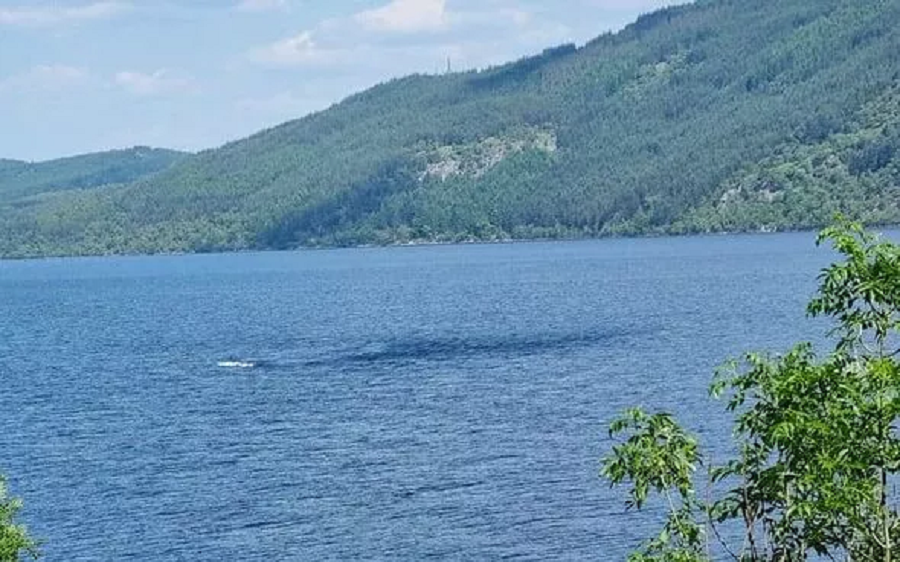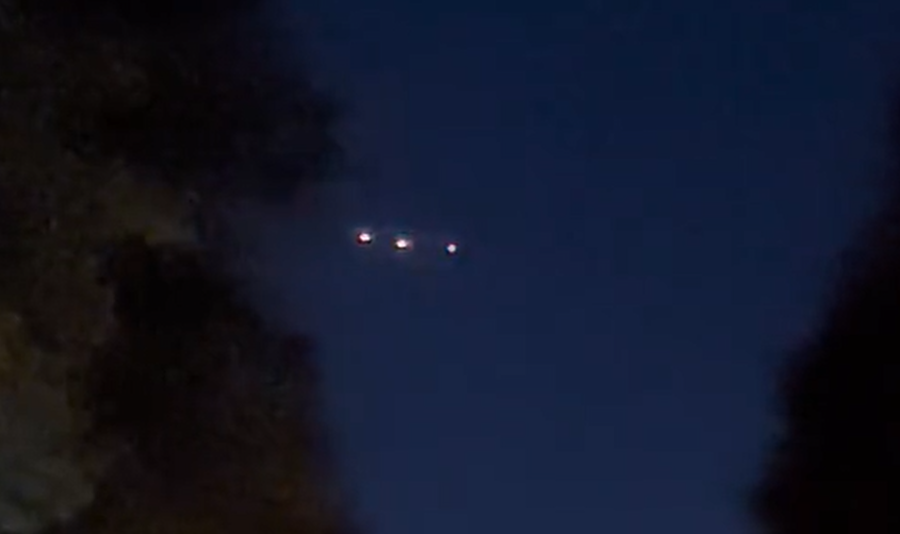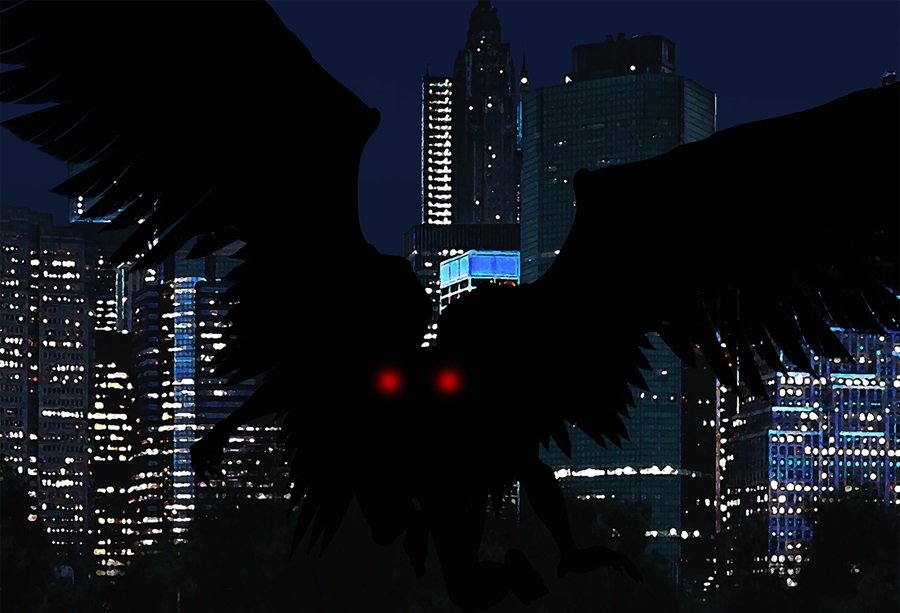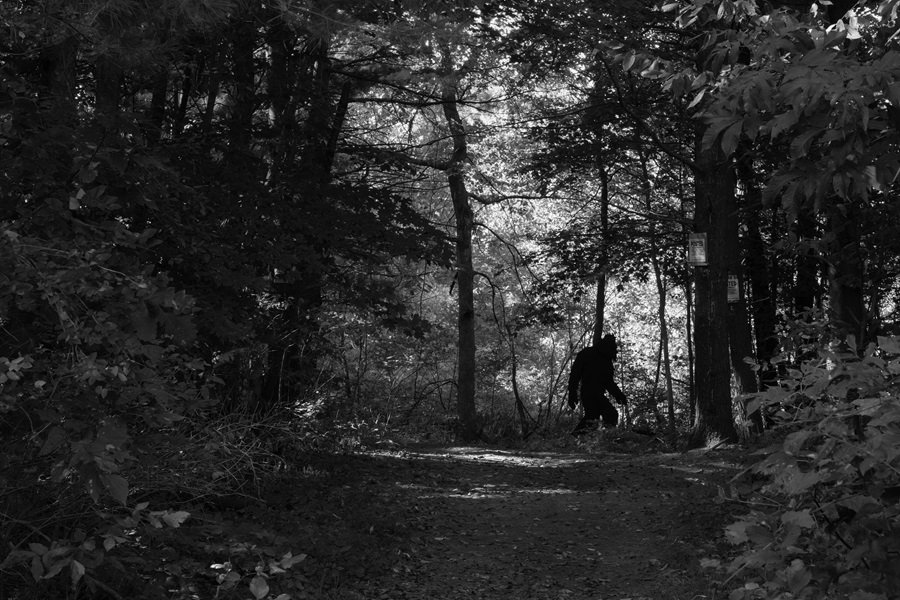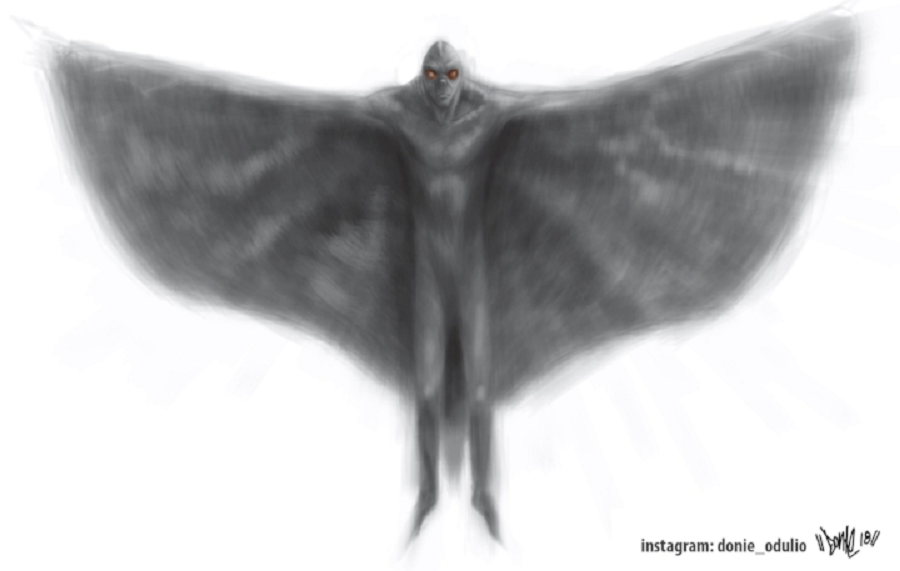Tourist Photographs "Long Shadow" Moving Underwater in Loch Ness
The "long shadow" photographed in Loch Ness by French tourist Etienne Camel and his wife Eliane. (The Official Loch Ness Monster Sightings Register)
French tourist Etienne Camel, a pharmacist from Lyon, and his wife Eliane were visiting Scotland's Loch Ness on June 15th of this year when they claimed to have seen a 65-foot-long dark object moving below the loch's surface.
The couple were taking photographs on the west side of the loch near Invermoriston at the time and managed to capture the image featured above.
"It was quite strange," Etienne told The Telegraph. "I am a man of science so I never believed that the Loch Ness monster is a prehistoric animal. But when I was taking a picture I saw this long, long shadow. I called my wife over and we saw the shadow move. I thought maybe it was a cloud, but there was none, or a boat, but none was near or reefs. There were small waves, like something was moving. It was 15 to 20 meters long and was about 150 meters away. It was quite strange and then it disappeared.”
"We could not tell if it was an animal, but something was moving under the water. I have never seen such [things] in lakes—and we have many where we live—before," he added.
This is the second report to be added to The Official Loch Ness Monster Sightings Register in 2023.
One popular skeptical explanation for sightings similar to this couple’s is a rogue wave.
Rogue waves are waves caused by wind, currents, and other circumstances, that are far larger than the "average" waves of a given time and place. Many skeptics believe that rogue waves can be mistaken for the wake of a large animal.
However, as referenced by Etienne in his testimony, some believe that sightings of Nessie—as the monster is affectionately known—are indicative of a surviving population of plesiosaurs, although others argue that more recent scientific study makes that possibility unlikely.
Plesiosaurs, aquatic reptiles who first appeared in the fossil record around 200 million years ago and were thought to have died off 66 million years ago (the same time as the dinosaurs), are a popular explanation for the monster said to inhabit Scotland’s Loch Ness; an explanation first introduced in the 1930s and later popularized by naturalist Sir Peter Scott and zoologist Denys Tucker.
Supporters of the hypothesis point to the long necks of plesiosaurs and postulate that this explains why witnesses sometimes describe seeing a neck-like appendage with a small head attached sticking up out of the water.
In the case of the Camel's sighting, they might argue that they had only seen the creature just below the surface.
But despite recent findings that suggest plesiosaurs were adapted to tolerate freshwater and might have even spent their entire lives in it, a research project published to the Journal of Vertebrate Paleontology by scientist Paul Scofield showed that plesiosaurs were actually very unlikely to ever lift their heads above the water.
It is much more likely, according to Scofield, that plesiosaurs used their long necks to dredge the seafloor.
"They have these enormous teeth arranged in rows like a grappling iron," he explained. "It has been hypothesized that they floated on the surface and dredged the seafloor blowing the dirt out through their teeth and leaving just the clams. Thus, their feeding method dictates the neck length—it's just like the giraffe but in reverse."
Some believers might argue that this only explains why any plesiosaurs inhabiting Loch Ness aren’t seen with their heads above water more often, but Scofield dismisses any belief in the monster entirely.
"I totally reject the idea that Nessie exists and that it is an elasmosaurus," he said. "Loch Ness monster records are a mixture of fakes and mistakes."
This wasn’t the first time within the past several years that the plesiosaur hypothesis had taken a beating in the court of public opinion.
A 2019 study conducted by Neil Gemmell, a New Zealand scientist and professor at the University of Otago, caused quite a stir when it failed to turn up any evidence of plesiosaurs in Loch Ness.
Gemmell's study involved gathering water samples from multiple locations and at different depths of the loch to scan for bits of animal DNA, and then working to identify it. The samples were sent to labs in New Zealand, Australia, Denmark, and France which used large sequence databases to compare the DNA found in Loch Ness with the majority of known living things. This was done to help distinguish and identify any potentially unknown genetic material.
The results revealed no evidence of any large animals such as sturgeon, catfish, sharks, or surviving prehistoric plesiosaurs, but they did show an abundance of eel DNA.
Many now point to giant eels as a possible explanation for the monster, although, as of yet, no definitive proof of their existence in the loch has been found.
But cryptozoologist Ken Gerhard has another hypothesis for the Loch Ness Monster.
"Based on thousands of eyewitness descriptions, I’m convinced that Nessie is just one of many such unknown creatures around the globe—Norwegian sea serpents, Champ and Ogopogo here in North America, lake monsters in Scandinavia, Russia, Japan and Argentina, among others—and that these animals represent the very same species, most likely descended from an ancient group of serpentine whales," he told the Ross-shire Journal in 2021.
Some witnesses, like Francesa McGarvey, who reportedly saw a dark shape emerge from the loch last April, do describe what they’ve seen as having whale-like qualities.
Although the vast majority of whales are found in saltwater, some whales can occasionally be found in freshwater rivers and lakes looking for food.
Supporters of Gerhard’s hypothesis might argue that the relative scarcity of credible evidence for a “monster” in the loch might be because they don’t live there full-time, but rather, only travel there in search of food.
And yet, there is currently no definitive proof for the existence of whales in Loch Ness, so the sightings remain unexplained.












